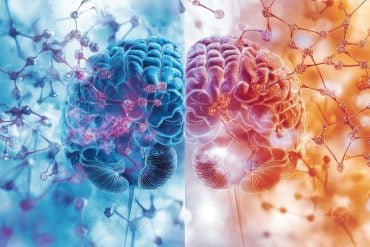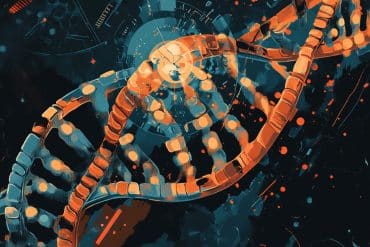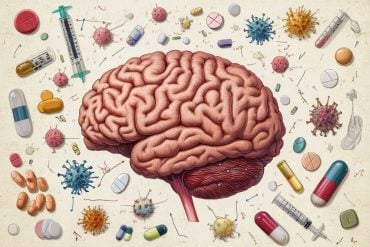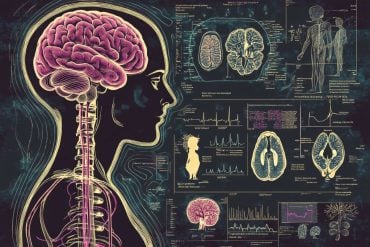Summary: Researchers established a model, termed “dynamic prospect theory,” which more accurately portrays human and monkey decision-making under uncertainty. In the study, 70 participants were asked to choose between two lotteries with varying reward sizes, probabilities, and risks.
The results showed that after experiencing an outcome larger than the expected value of the chosen option, participants behaved as though the probability of winning in the next lottery increased.
This intriguing finding, mirrored in subsequent monkey trials, expands our understanding of decision-making mechanisms.
Key Facts:
- The “dynamic prospect theory” model, integrating prospect theory and reinforcement learning theory, more accurately described human and monkey decision-making under risk.
- After experiencing an outcome larger than expected, participants and monkeys behaved as though the probability of winning increased in the next lottery.
- This change in behavior appears to be driven by a change in the perception of probabilities, not by a change in the valuation of rewards.
Source: University of Tsukuba
How do humans make decisions when the outcomes are uncertain?
One possible way would be to calculate the expected value of each option by multiplying each possible outcome amount by its probability and then choosing the option with the highest expected value.
While this strategy would maximize the payoff in expectation, this is not what people tend to do. In particular, people seem to be irrationally influenced by past outcomes of their decisions when making subsequent choices.
Researchers from the University of Tsukuba have developed and validated a model (“dynamic prospect theory”) that integrates the most popular model in behavioral economics to describe decision-making under uncertainty—prospect theory, and a well-established model of learning from neuroscience—reinforcement learning theory.
This model more accurately described the decisions that people and monkeys made while facing risk than prospect theory or reinforcement learning theory alone.
Specifically, the researchers asked 70 people to repeatedly choose between two lotteries in which they could gain some reward with some probability. The lotteries varied in the size of the reward, the probability of receiving it, and the amount of risk involved.
The results showed that immediately after experiencing an outcome that was bigger than the expected value of the selected option, participants behaved as if the probability of winning in the next lottery increased.
Senior author of the study Assistant Professor Hiroshi Yamada says “This behavior is surprising because winning probabilities were clearly described to the participants (participants did not have to learn them from experience) and these probabilities were also completely independent of previous outcomes.”
Using their dynamic prospect theory model, the researchers were able to determine that the change in behavior is driven by a change in the perception of probabilities rather than by a change in valuation of rewards.
Yamada also says: “Such learning from unexpected events underlies reinforcement learning theory and is a well-known algorithm that occurs when people need to learn the rewards from experience. It is interesting that it occurs even if learning is not necessary.”
In similar experiments with macaque monkeys, whose brains closely resemble those of humans, essentially the same results were observed. Researchers commented that the similarity in human and monkey behavior was remarkable in this study.
Based on the results of this research, it is expected that the investigation of the monkey brain will lead to an understanding of the brain mechanisms involved in the perception of rewards and probability that all of us use when making risky decisions, as well as the joy we feel when we succeed.
Funding: This study was supported by JSPS KAKENHI Grant Numbers JP:15H05374 and 21H02797, Takeda Science Foundation, Council for Addiction Behavior Studies, Narishige Neuroscience Research Foundation, Moonshot R&D JPMJMS2294 (H.Y.), and ARC DP190100489 (A.T.).
About this psychology research news
Author: KAMOSHITA Kimio
Source: University of Tsukuba
Contact: KAMOSHITA Kimio – University of Tsukuba
Image: The image is credited to Neuroscience News
Original Research: Open access.
“Dynamic prospect theory: Two core decision theories coexist in the gambling behavior of monkeys and humans” by Hiroshi Yamada et al. Science Advances
Abstract
Dynamic prospect theory: Two core decision theories coexist in the gambling behavior of monkeys and humans
Research in the multidisciplinary field of neuroeconomics has mainly been driven by two influential theories regarding human economic choice: prospect theory, which describes decision-making under risk, and reinforcement learning theory, which describes learning for decision-making.
We hypothesized that these two distinct theories guide decision-making in a comprehensive manner.
Here, we propose and test a decision-making theory under uncertainty that combines these highly influential theories.
Collecting many gambling decisions from laboratory monkeys allowed for reliable testing of our model and revealed a systematic violation of prospect theory’s assumption that probability weighting is static.
Using the same experimental paradigm in humans, substantial similarities between these species were uncovered by various econometric analyses of our dynamic prospect theory model, which incorporates decision-by-decision learning dynamics of prediction errors into static prospect theory.
Our model provides a unified theoretical framework for exploring a neurobiological model of economic choice in human and nonhuman primates.







